https://www.google.com/maps/d/edit?hl=en&authuser=0&mid=1ju8Ececn53xnygUgHUf9YE-PykQ&ll=42.55410377364256%2C-71.12473190000003&z=18
This week’s phenology site was not at my usual one in South Burlington. Instead, I examined a site in my hometown: the Council Ring in the Reading Town Forest.
Reading, Massachusetts, my hometown, is home to a 290 acre forest in the northwestern portion of the town. The town forest was, according to my town’s website, largely created in 1930, when Boy Scouts and other interested citizens planted 100,000 spruce, balsam, and red, white, and scotch pine trees. I ventured deep into this abnormal evergreen forest to compare it to my Vermont site.
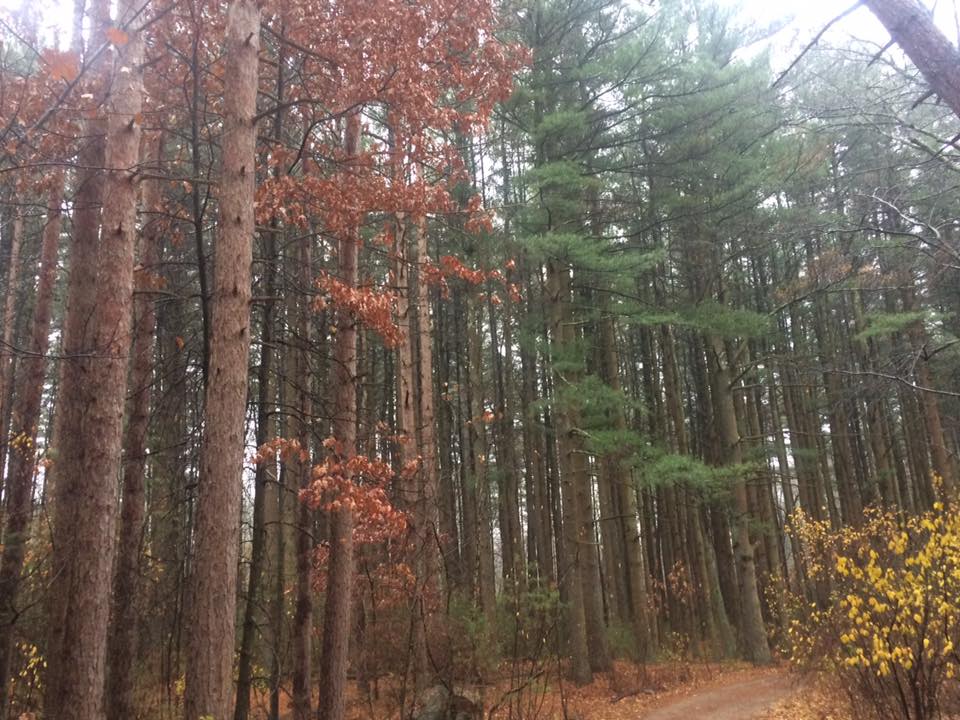
On the walk in to my site I saw a dramatic divide between Eastern White Pines and Red Pines, indicative of human planted trees. (McHale, 2016)
The Council Ring, where I centered my site, is a clearing in the middle of a eastern white pine grove. The site is used frequently by local Boy Scout troops, and perhaps because of it, there is almost no undergrowth except for some glossy buckthorn.
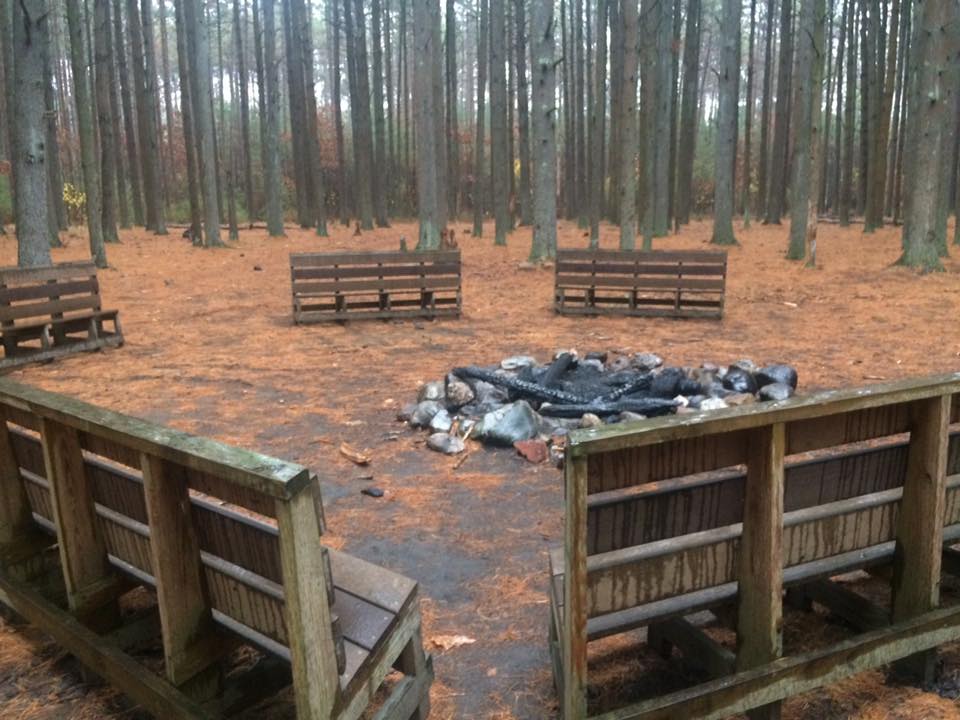
The Council Ring. The area is used frequently by the Boy Scouts (including my troop a number of times). A number of Eagle Projects are present in the forest, including the benches pictured around the fire circle. (McHale, 2016)
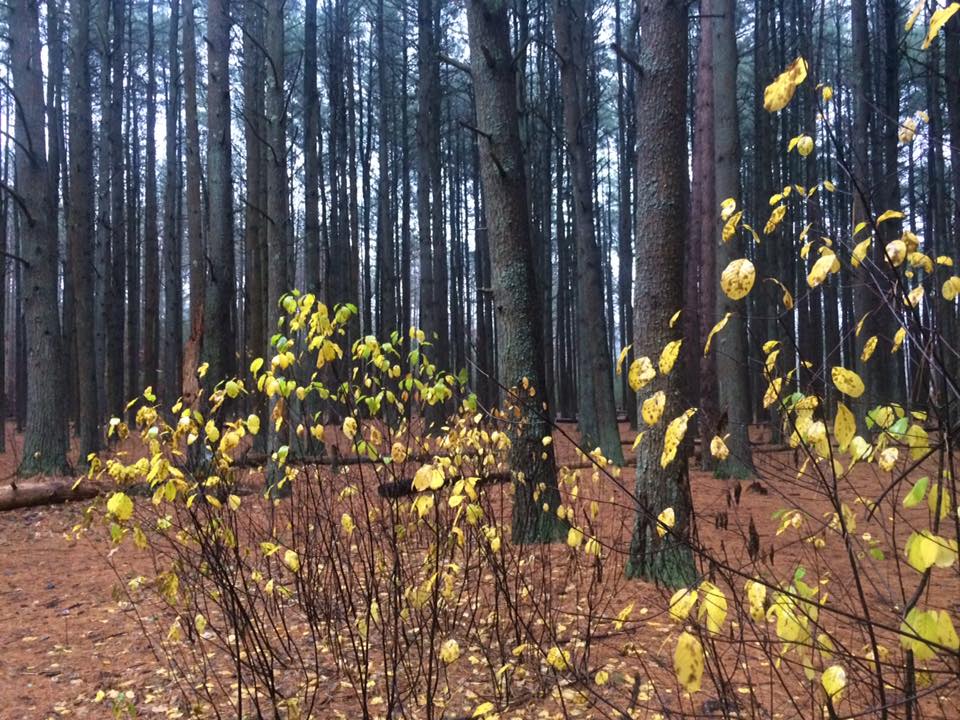
Some limited buckthorn undergrowth, but that’s about it. (McHale, 2016)
My South Burlington site also had a buckthorn undergrowth presence and a predominantly evergreen overstory, but the similarities end there. The Town Forest site is a near monoculture of Eastern white pines, while my South Burlington site has a greater variety of species including Eastern Hemlock, Jewel weed, and Maples and Birches further up the stream banks.
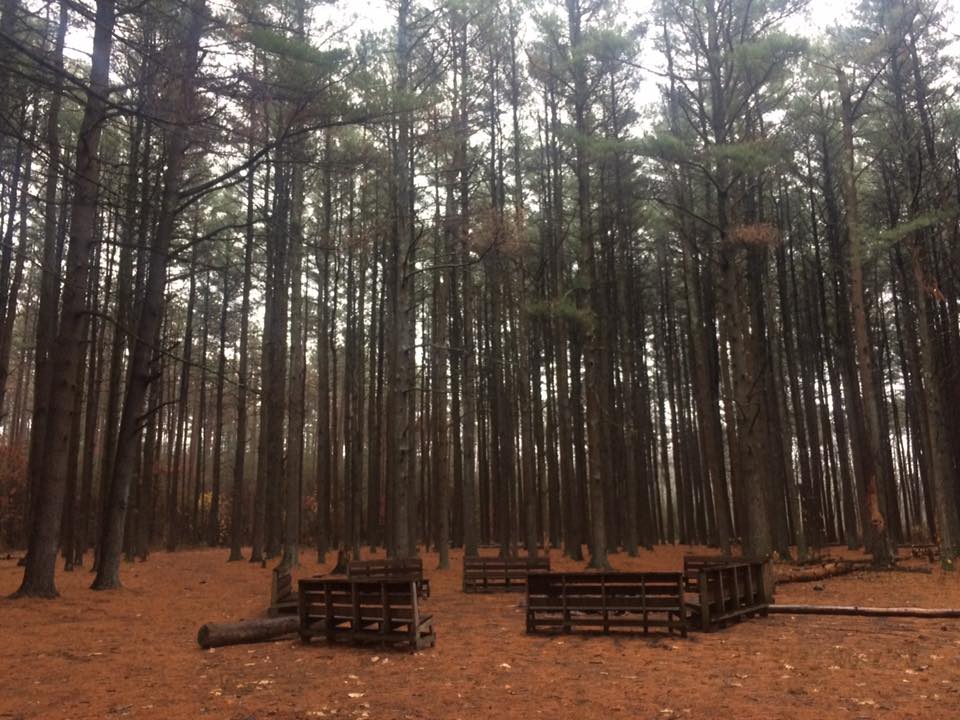
Another view of the Council Ring. (McHale, 2016)
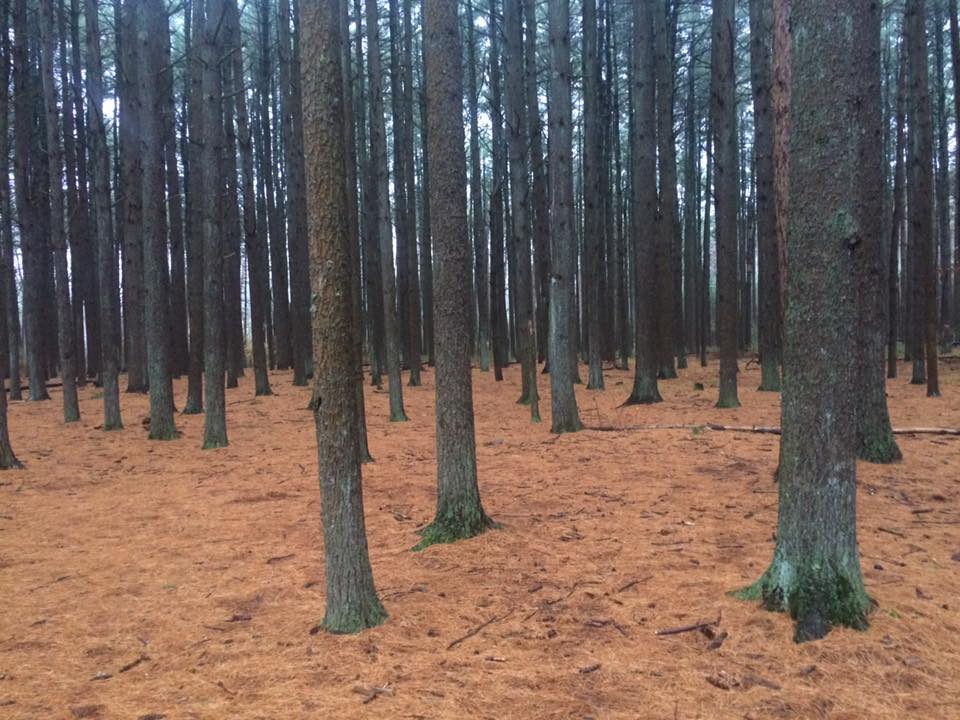
Pretty much nothing is growing here besides Eastern white pines… (McHale, 2016)
Also, the sense of place seems to be stronger in Reading. The town forest is used so much that there is greater appreciation of it, and the resources it provides. My South Burlington site meanwhile, stuffed between I-189 and a suburban neighborhood, is largely ignored. Plus, minus some drainage rocks and the bridge extending over the site, there is little human presence in the South Burlington site.
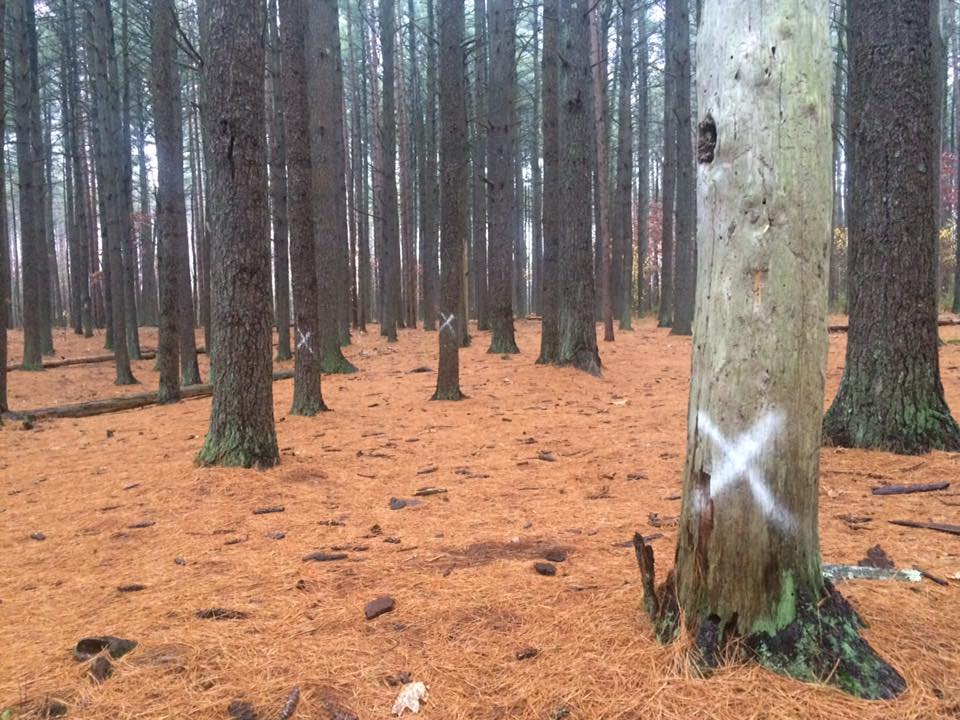
Some dead trees are marked with white x’s, indicating that they be removed through some forest management practices. (McHale, 2016)
The lack of undergrowth, numerous Eagle Projects in the forest, the large fire ring, and forest management practices indicate there is a real human presence in my Reading site. Nonetheless, both of them are beautiful locations!
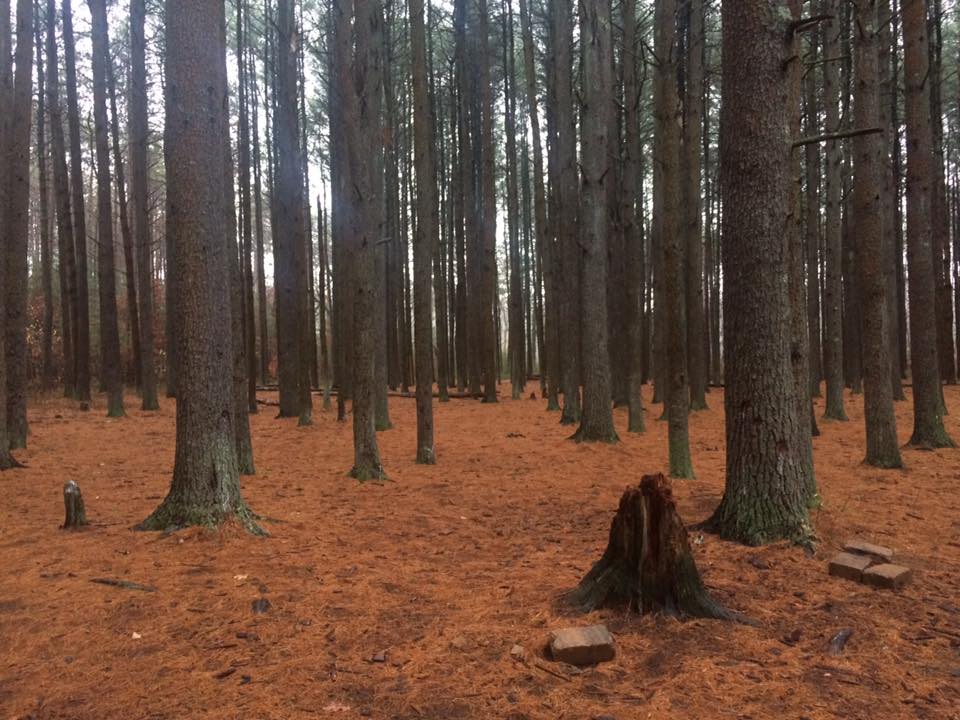
She’s a brick! House! Some bricks left behind are probably the remnants of previous campers violating ‘leave no trace’ principles. (McHale, 2016)
